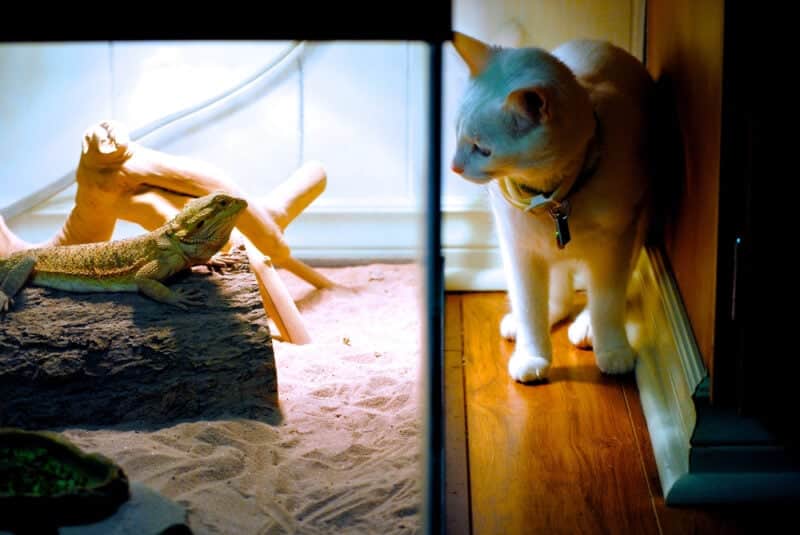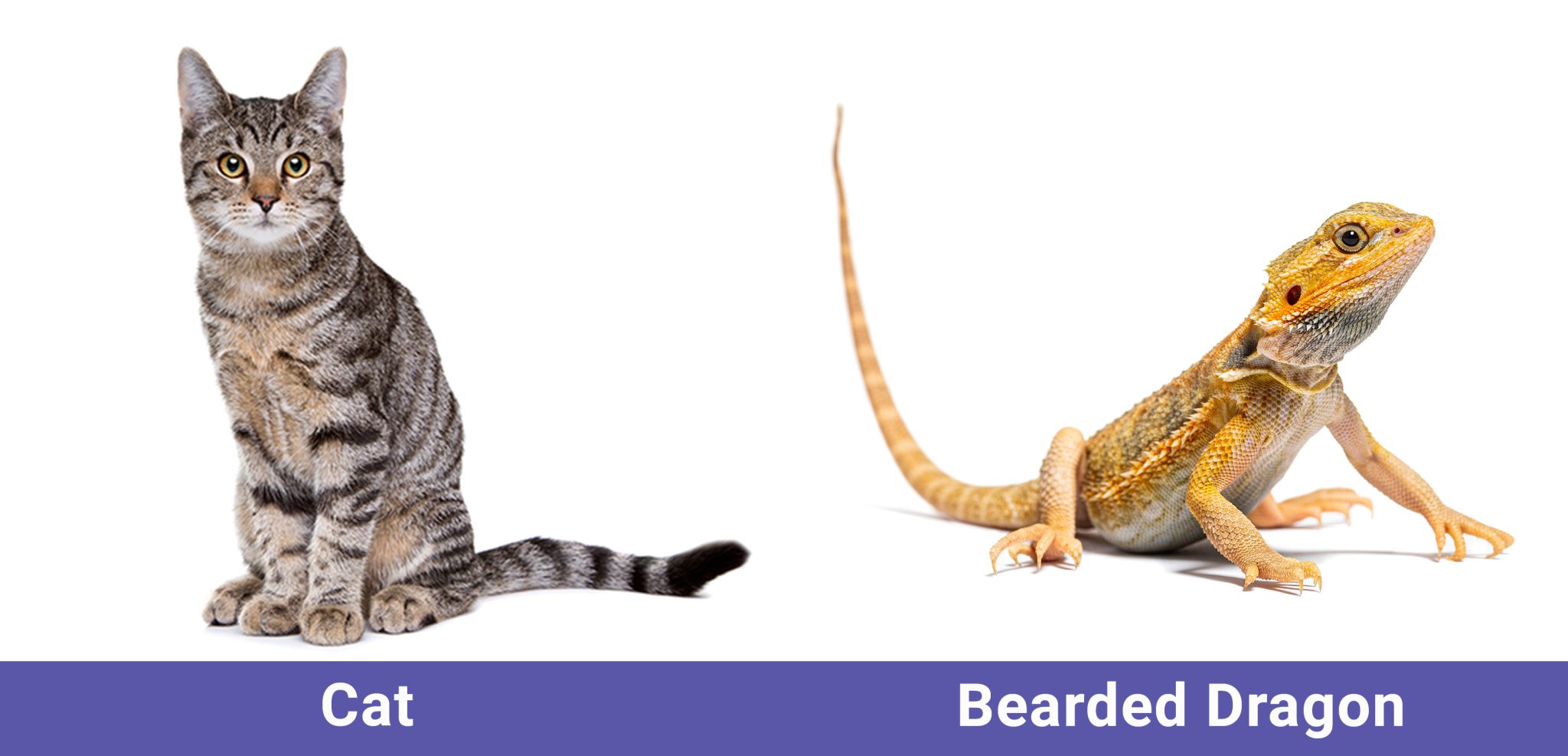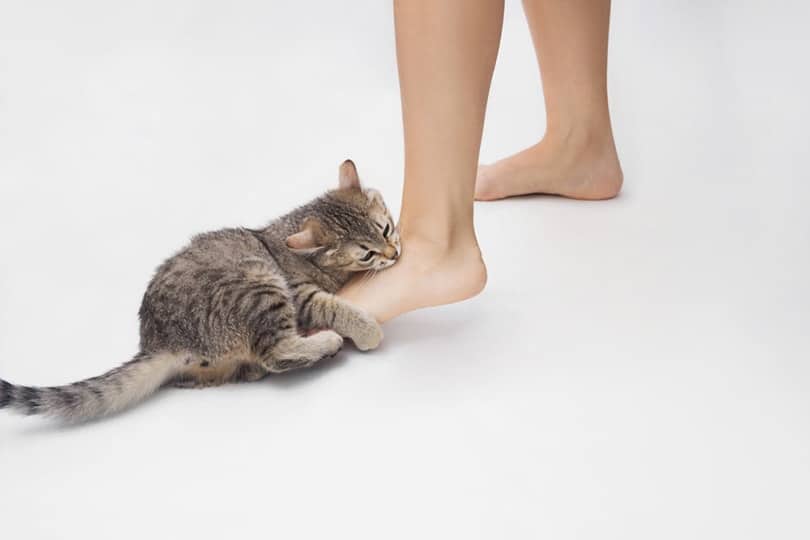Felines and reptiles have a complicated relationship. On the one hand, cats naturally hunt small lizards, such as geckos. In turn, these lizards sometimes carry parasites called flukes (Platynosomum fastosum) that can cause “Lizard Poisoning” in your cat. If you have both a cat and a Bearded Dragon, you may be wondering, do cats eat Bearded Dragons?
The Bearded Dragon is one of the most laid-back reptiles on the planet, which makes them pretty chill pets. It’s actually possible to raise a cat and a Bearded Dragon under the same roof as long as you take precautionary measures to make sure both species are safe. These pets should NEVER be left together unsupervised or forced to share space. Particular care must be taken when dealing with young beardies.

Do Cats Eat Bearded Dragons?
Even house cats that have never stepped a paw into the outdoors possess a prey drive. The strength of that instinct depends on your cat. Some felines prefer to spend their days lounging in the sunshine without a care in the world. Others restlessly hunt everything that moves, including inanimate objects such as the vacuum cleaner. These cats probably wouldn’t be well paired with the Bearded Dragon and may even try to eat them.
However, while your cat can attack and kill your Bearded Dragon, it’s unlikely, especially as the Bearded Dragon grows bigger. Also, Beardies do have teeth and can fight back, so the chances of them becoming your cat’s meal aren’t super likely. It is important, though, to keep your Bearded Dragon out of your cat’s reach especially if it is a baby or juvenile and not to let it run around freely where your cat might catch it. It is quite likely that your cat can inflict other injuries on your Beardie by swiping or scratching as well as biting. So it is not just catching and eating we need to be concerned about.
It’s also worth considering that while cats do prey on lizards, your cat has probably never seen a Bearded Dragon before and may not see it as prey but as an interesting new item. But even if the cat doesn’t try to catch your Bearded Dragon, the stress of having a predator constantly on the prowl and lurking around the reptile’s enclosure can create health problems in your Bearded Dragon and is unfair. It’s important to keep your Bearded Dragon in an area that is inaccessible to your cat.

Can a Cat and a Bearded Dragon Live Peacefully Under the Same Roof?
With rare exceptions, cats and Bearded Dragons can get along exceptionally well. Both felines and Beardies are drawn to food, water, sunlight, and you, so they’ll have some things in common from the start. The key is early socialization. You should introduce them slowly and remember to never leave them alone together. For example, you shouldn’t leave a baby Beardie alone with an adult cat or a kitten with an adult Beardie. Keep them in separate rooms or enclosures when you leave the house, and put your Beardie in a cage if your cat starts showing signs of aggression or stalking.
While you might be used to your cat jumping on the countertops, your Bearded Dragon will need more boundaries since they carry salmonella. Additionally, felines are territorial creatures that benefit from having a room, or at least a corner of the house, to themselves away from all other animals. Thus, allowing your cat into the kitchen (but not your Beardie) can solve both problems at once.

Conclusion
In nature, cats and reptiles don’t typically get along. However, Beardies and kitties seem to be an exception to the rule. With proper socialization and supervision, they might cohabit quite happily. You should always introduce them to each other slowly. Prioritizing their safety over the speed of introduction increases the long-term chances of making the relationship work.
- Related Read: Are Geckos Poisonous to Cats? Vet-Reviewed Dangers & FAQ
Featured Image Credit: (L) E LLL, Shutterstock | (R) Eric Isselee, Shutterstock









